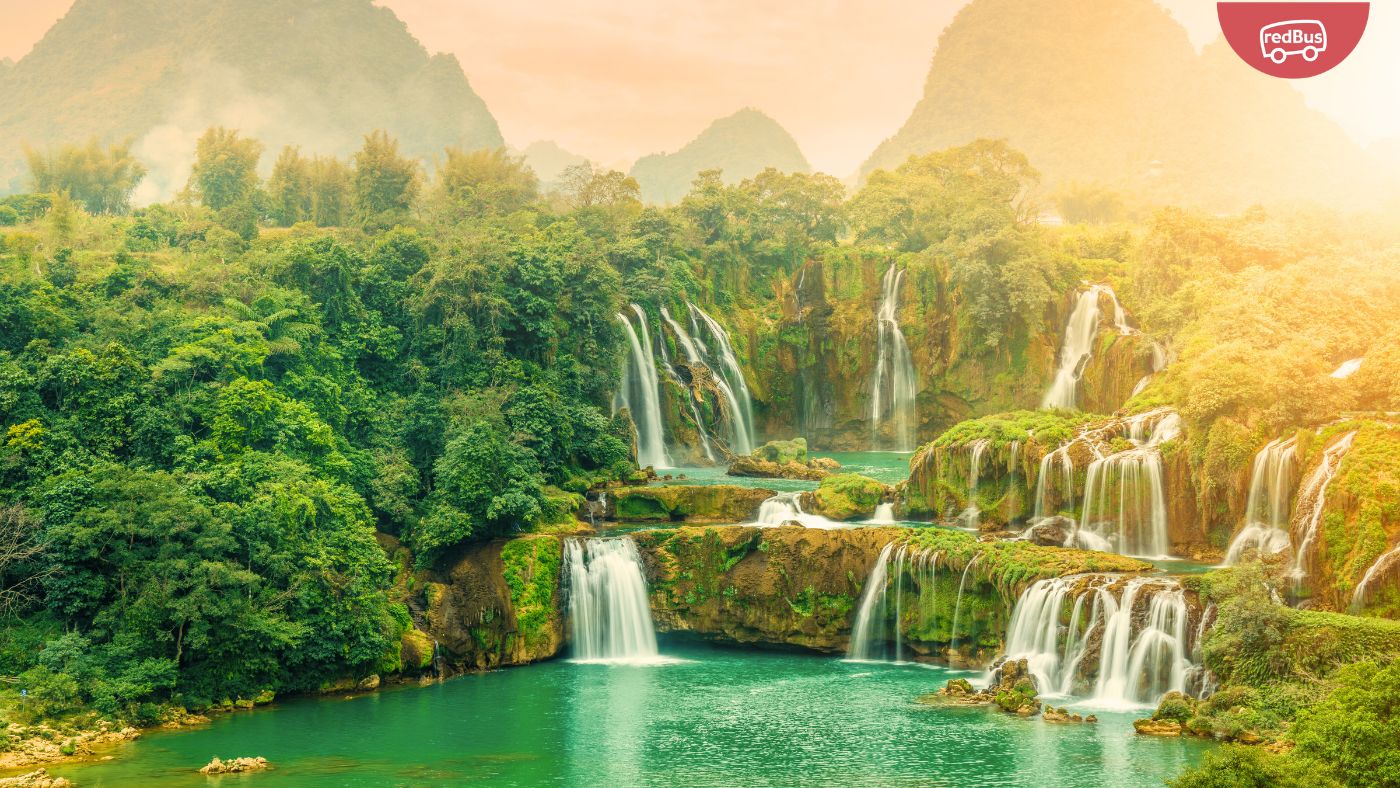The Ban Gioc Waterfalls, a breathtaking natural wonder that straddles the Vietnam-China border, has long been a must-see destination for travelers seeking the splendor of Vietnam’s rugged landscapes. Its cascading waters, tiered like a crown of lace, create a mesmerizing spectacle against the backdrop of lush greenery. This natural wonder, often hailed as one of Vietnam’s most captivating attractions, is a testament to the raw beauty that Cao Bang has to offer.
Ban Gioc Waterfall Location: Where Is It, & Is It Worth Visiting?
The Ban Gioc Detian Waterfalls are located in Vietnam’s Cao Bang Province, within Dam Thuy Commune, approximately 335 kilometers from Hanoi. This majestic waterfall is one of the largest in Southeast Asia and the fourth largest in the world among waterfalls that form a natural border between two countries. The main waterfall is about 100 meters wide and 70 meters high, with three distinct cascades, resembling delicate ribbons of silk, making it one of the world’s most exquisite waterfalls.
The sight of the waterfall cascading down the terraced rock formations into the jade-green Quay Son River is nothing short of spectacular. Whether you’re a nature enthusiast, photographer, or simply a traveler looking for tranquility, Ban Gioc Detian offers a unique experience that is not to be missed.
Best Time to Visit the Ban Gioc Falls
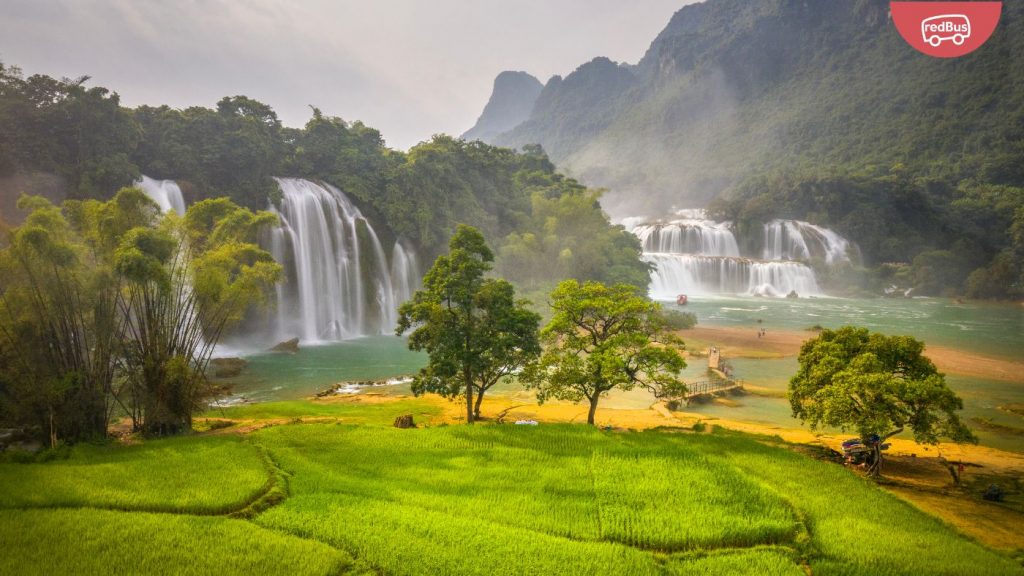
The best time to visit the Ban Gioc Waterfalls is during the rainy season, from May to September which brings the waterfall to its full glory. The lush greenery around the falls is at its peak, creating a stunning contrast with the white water. However, heavy rain can also make the roads challenging causing potential travel disruptions, so it’s important to check the weather forecast before your trip.
If you prefer a quieter visit, consider going during the dry season (October to April). While the waterfall may be less powerful, the weather is more temperate, making it easier to explore the surrounding areas.
Cao Bang to Ban Gioc Waterfall – How to Get There
Getting from Cao Bang to Ban Gioc Waterfall can be an adventure in itself. Some people also take the journey from Hanoi which covers approximately 335 kilometers and can be made by car, motorbike, or bus.
- By Car or Motorbike: The drive from Hanoi to Ban Gioc takes about 6 to 7 hours. The roads are scenic but can be narrow and winding, so caution is advised, especially if you’re driving a motorbike. Alternatively you can also rent a motorbike in Cao Bang and taking a day trip to the falls is also a popular option for those who enjoy the freedom of riding through the countryside. You will have to pay some amount for parking at the base of the waterfalls.
- By Bus: For those who prefer public transport, there are buses and limousines available from Hanoi to Cao Bang. The journey takes around 6-8 hours. Once in Cao Bang, you can take a minibus to the Ban Gioc Waterfall, which takes about 2 hours. You can book your limousine tickets online on redBus, Vietnam in advance.
- With a Tour Group: Several tour companies offer guided trips from Hanoi to Ban Gioc Waterfall, often including stops at other nearby attractions like Nguom Ngao Cave and Ba Be Lake. This is a convenient option if you prefer not to worry about the logistics of transportation and accommodation.
Things to Keep in Mind – Travel Tips
Ban Gioc Waterfall Opening Hours:
- Summer: 7:00 AM to 6:00 PM
- Winter: 7:30 AM to 5:30 PM
Entrance Fees to the Waterfall:
- Adults: 45,000 VND
- Children (1-1.3 meters tall): 20,000 VND
- Children under 1 meter: Free
Additional Fees :
- Raft rental: 50,000 VND per person
- Mat rental: 30,000 VND per mat
- Horseback photo opportunity: 20,000 VND per person
- Motorbike parking: 10,000 VND per motorbike
Things to Carry
- Hiking shoes to keep yourself protected
- Camera to click all those Instagrammable photos
- Rain poncho in case you are travelling in the rainy seasons
- Waterproof case for phone and a waterproof bag
- Passport for ID verification if needed
As of August 2024, the cross-border tours to Ban Gioc-Detian Waterfalls are temporarily suspended due to an unfortunate accident on the Chinese side of the waterfalls. It’s essential to stay updated on the situation if you’re planning a visit. The management board advises tourists to avoid registering for cross-border tours until further notice. However, domestic travel to the Ban Gioc Waterfall area is still available, and visitors are encouraged to explore the beauty of the Vietnamese side of the falls.
Also, keep in mind that the infrastructure around Ban Gioc is still developing, so it’s advisable to plan your trip carefully. Accommodations in Cao Bang are basic but comfortable, with options ranging from budget-worthy guesthouses to more upscale resorts like the Saigon Ban Gioc Resort, which offers views of the falls.
Exploring the Ban Gioc Waterfall Area
While the waterfall is undoubtedly the star of the show, the surrounding area offers a plethora of experiences that make the journey to this remote part of Vietnam even more worthwhile.
1. Nguom Ngao Cave
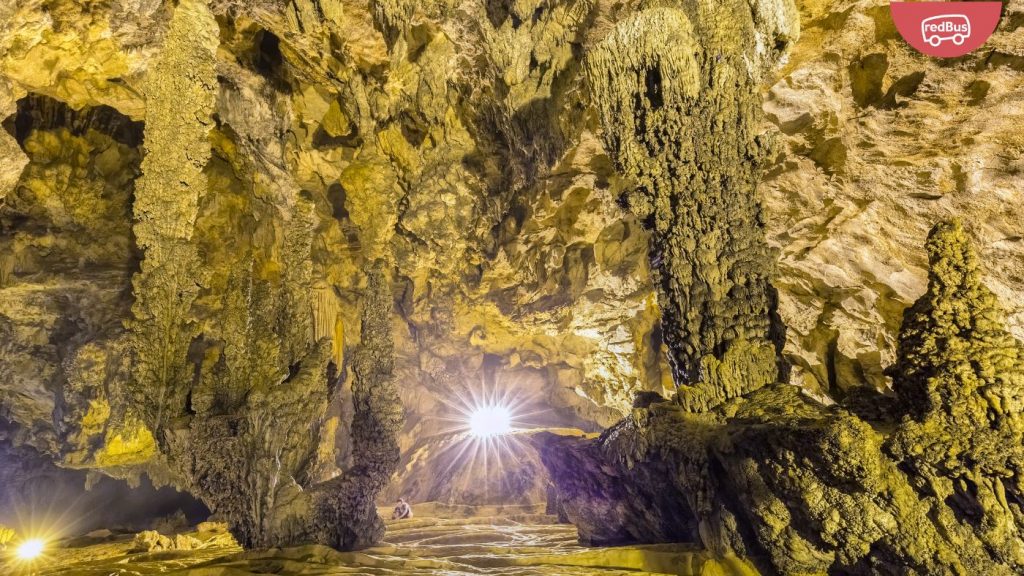
Located just 3 kilometers from Ban Gioc Waterfall, Nguom Ngao Cave is a fascinating limestone cave known for its impressive stalactite and stalagmite formations. The cave stretches for several kilometers underground, with large chambers and narrow passages creating an otherworldly landscape. A visit to Nguom Ngao Cave is a must for those interested in geology and natural beauty.
2. Phat Tich Truc Lam Ban Gioc Pagoda
For a spiritual experience and a panoramic view of the Ban Gioc Waterfalls, head to the Phat Tich Truc Lam Ban Gioc Pagoda. This Vietnamese Buddhist temple is located on a hill overlooking the falls and offers a serene setting for reflection and meditation. The pagoda’s traditional architecture and the peaceful atmosphere provide a perfect contrast to the powerful roar of the nearby waterfall.
3. Phong Nam Valley and Rice Paddies
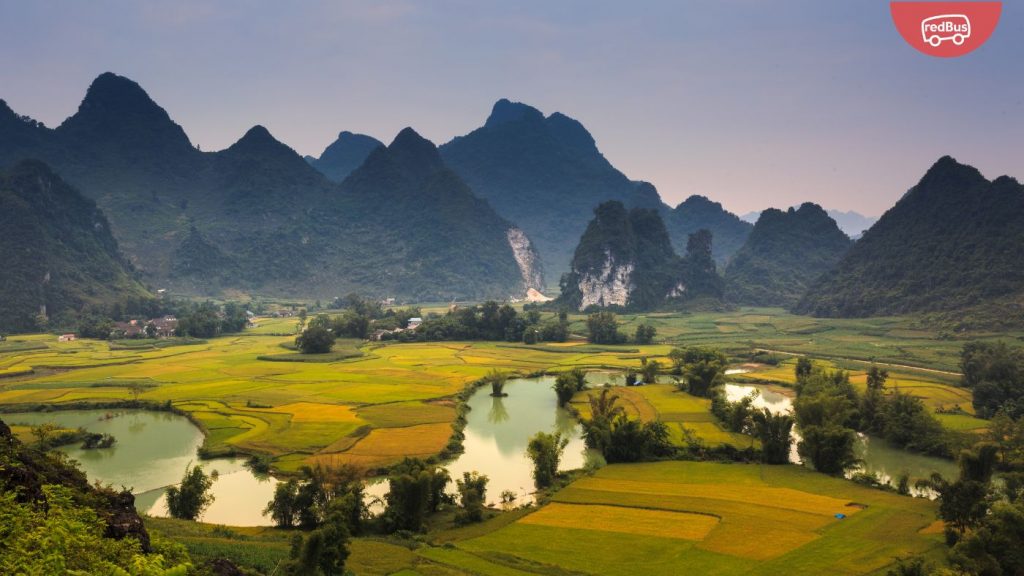
The journey to Ban Gioc Waterfall also takes you through the picturesque Phong Nam Valley, where you’ll find terraced rice paddies that turn golden during the harvest season. Late September and October are the best times to see this stunning landscape, as the fields transform into a sea of gold, providing a perfect backdrop for photography.
4. Rafting at Ban Gioc Waterfalls
For a closer view of the waterfalls, take a bamboo raft ride on the Quay Son River. For a small fee, local boatmen will guide you near the base of the falls, allowing you to experience the full force of the cascading water up close. The gentle swaying of the raft, the cool mist in the air, and the thunderous sound of the falls create an unforgettable experience.
5. Ba Be Lake
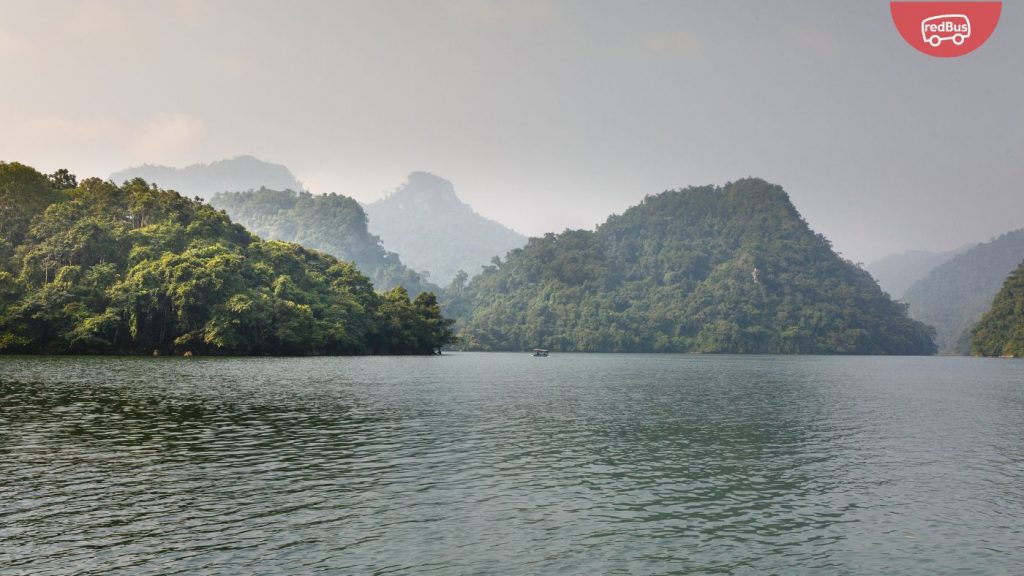
Extending your adventure to Ba Be Lake will all be worth it. The lake is actually composed of three interconnected bodies of water: Pe Lam, Pe Lu, and Pe Leng, giving it the name “Ba Be,” which translates to “Three Lakes.”
This hidden gem is Vietnam’s largest natural lake, surrounded by breathtaking limestone cliffs and lush forests. Imagine kayaking through its tranquil waters, exploring hidden caves like the Puong Cave, or simply relaxing on the shores. It’s a perfect escape from the hustle and bustle and a chance to immerse yourself in nature’s beauty. The surrounding national park protects a rich biodiversity, making it a paradise for birdwatchers and nature lovers.
Final Word
The journey to the Cao Bang Ban Gioc Waterfalls is rewarded with stunning landscapes, cultural experiences, and a connection to nature that few places can offer.
Whether you’re marveling at the power of the falls, exploring the nearby caves, or simply enjoying the peaceful rural scenery, Ban Gioc Waterfalls is a destination that leaves a lasting impression. As always, stay informed about travel advisories and make the most of your visit to this remarkable corner of Vietnam.
